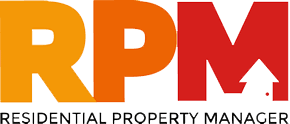With renovation season approaching it pays to know what gas risks there are with renovation, no matter how big or small the home improvements are.
If your landlords are like most homeowners they’ve been busy watching the reality renovation shows and might be looking to build their equity through home improvements.
But as exciting as it is to knock down walls, fit out a new kitchen, build an extension or upgrade appliances, it isn’t without its risks, and for the safety of your business, your landlords and your tenants you need to be aware of them, particularly when it comes to gas in a property.
Faulty appliances, flue blockages and gas leaks can all lead to the production of carbon monoxide, a highly poisonous colourless, odourless and tasteless gas that can cause serious health issues, including death. To ensure the dangers are avoided, here are five tips to keep in mind and inform landlords about when you hear of upcoming renovations where gas is installed.
1. Know where your gas pipework or flues are located
Before drilling, nailing or knocking down walls it is important to know where the gas pipework is located. Gas flues can be fitted through the ceiling and roof, or fitted through the wall, and any bump or blockage could result in poisonous carbon monoxide gas released into the property.
2. Watch for blocked flues
Flues can become blocked from nests, insects and debris, or by being covered up in the case of a chimney renovation.
Sooting, or yellow or brown staining around appliances, ceilings or walls can be an indicator that carbon monoxide is present as a result of a blocked flue. If these signs are evident it is imperative that appliances are turned off and the home and appliances are checked by a licensed gas fitter.
3. Recognise when help is needed
There are some jobs in a renovation that shouldn’t be handled by anyone other than a licensed professional, and installing or moving gas appliances is one of them. Any maintenance, alteration or repairs on gas pipework or appliances like stoves and hot water systems should be done by a licensed gas fitter – and be sure you check their qualifications.
A licensed gasfitter will make sure the flue is not blocked or leaking and ensure gases are being safely released outside and not into the home. They can also check and clean gas appliances (which should be done every two years, according to manufacturers' recommendations) to keep them working safely and effectively.
4. Know the signs of carbon monoxide poisoning
While carbon monoxide is almost impossible to detect, it can give you subtle symptoms and signs that it may be present. Symptoms of poisoning start like the flu; you can experience headaches, tiredness, nausea and vomiting, which can lead to confusion, unconsciousness and death in high doses.
It is important that landlords and tenants know and understand the signs and that if they do see any of the following, carbon monoxide may be present in the home:
· Pilot lights that frequently go out
· Excessive condensation
· A blue flame that starts to burn yellow or orange
· Sooting, or yellow or brown staining around your appliances, ceilings or walls
· Improved health when you are away from home but it worsens on your return
5. Add a carbon monoxide alarm
One addition landlords should put on their home improvement list is a carbon monoxide alarm. Just like smoke alarms, carbon monoxide alarms save lives.
Ensure renovations, additions and improvements are safe for all involved by making sure landlords follow these five gas tips. While it can be tempting for landlords to cut corners and renovate as affordably as possible, the health and safety of tenants is too important – as is the protection of your landlords' interests and your business.








You are not authorised to post comments.
Comments will undergo moderation before they get published.